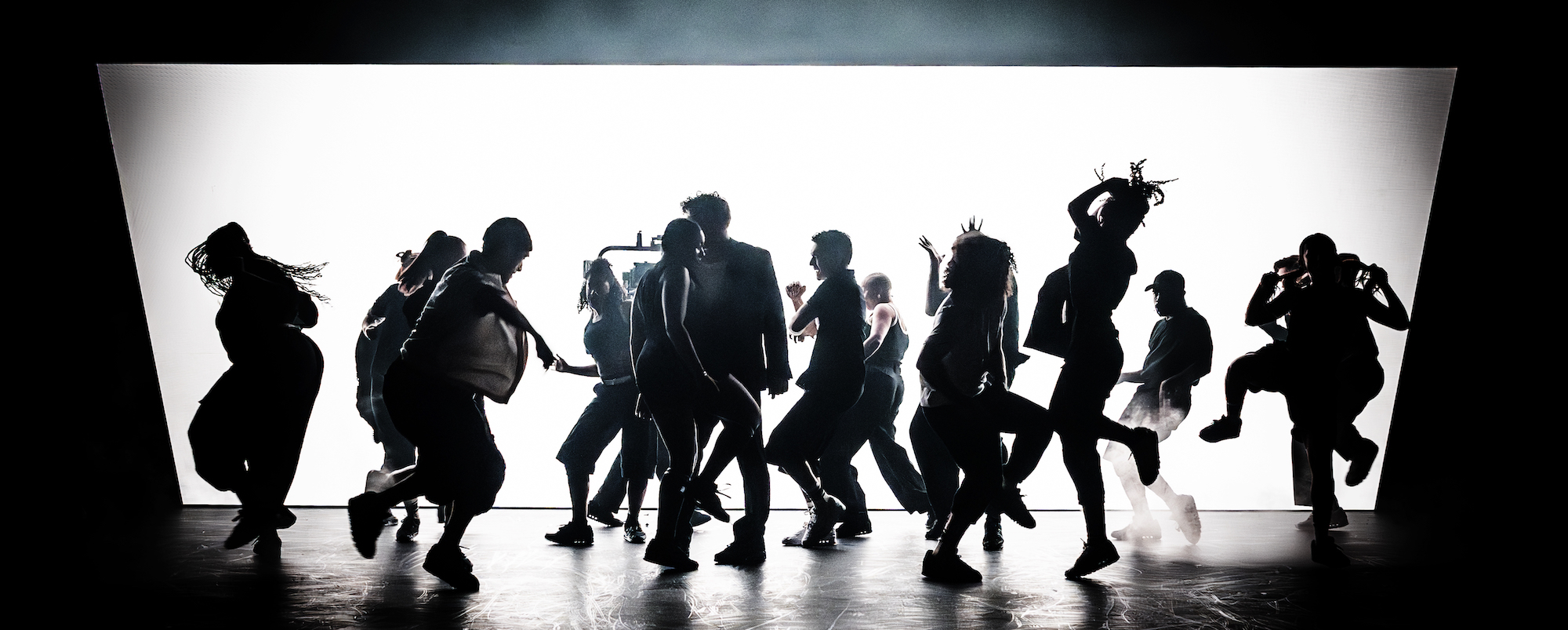NEW YORK — There’s no more gilded cage for Norma in director Jamie Lloyd’s red-hot, straight-from-London revival of Andrew Lloyd Webber’s noir 1993 musical, “Sunset Boulevard,” not with Nicole Scherzinger sizzling in the lead role. At the St James Theatre, Norma Desmond has morphed from deranged diva to sexy beast, from an object of creepy pity warbling emotional ballads of regret to an eroticized star at her sexual peak, making wide-eyed love to a camera even when dripping with her lover’s blood. Wowza!
Some folks say there has been an erotic awakening of older women in Hollywood this year. Well, here’s the throbbing Broadway revival in sync with all of that, a show that makes an excellent case that silent movie stars had better sex. And, heaven have mercy, what a seductive central performance!
None of Lloyd’s hipster ideas to make extensive use of live video feeds and have his charming and judiciously understated male lead, Tom Francis, start the top of Act 2 while walking down 44th Street and singing live among the tourists into a camera would have worked without a Norma who could deliver Lloyd Webber’s best score. “Deliver” doesn’t do Scherzinger’s performance justice. Her lower register roars through the power ballads “With One Look,” and “As if We Never Said Goodbye,” both of which are immaculately sung and clearly the result of a level of detailed lyrical and physical preparation that you don’t see much with this kind of fearlessness. Both marquee numbers received long, show-stopping ovations at the performance I saw, and not just from fans of the Pussycat Dolls. Scherzinger is fantastic.
Sure, you’re watching stylized acting. But Norma was a silent movie star, after all, and this was never a part screaming for modesty. Heck, in the 1990s when “Sunset Boulevard” first crossed the Atlantic, I recall the backstage stories of diva rivalry being more intense than anything the paying customers were buying.
But as one who has seen this show a dozen times before, I think the brilliance of Lloyd’s revival, aside from the silky-sensual choreography from Fabian Aloise, is how it devictimizes Norma and pushes the emphasis of the material away from the eccentricity of the star, its prior root, and towards the cruelty of the Hollywood system that used her up and spat her out.
In the original production (and the source 1950 Billy Wilder movie), it was intended to shock you that the down-at-heel screenwriter Joe Gillis (Francis) would stoop so low as to sleep with the aging Norma and not the sweet fellow screenwriter, Betty Schaefer (Grace Hodgett Young), a woman his own age. Not in this production. Whatever cash Joe is getting from ghostwriting Norma’s comeback script does not read as the main benefit. Norma’s servant Max (David Thaxton) is not so much an enabler, as was true in the past, as a defanged cast-off, condemned forever to wait in the shadows as Norma dances her beguiling Salome for her new beau Joe. The show uses a beautiful dancer (Hannah Yun Chamberlain) to convey the younger Norma, adding to the show’s seductive arsenal.
Those familiar with Lloyd’s work will not be surprised to see the contemporized scenes where actors in Prada-like black (sets and costumes are by Soutra Gilmore) speak lines straight out front or the show being shorn of traditional physicality. That’s especially the case here, with Norma’s return to Paramount (Lloyd focuses entirely on designer Jack Knowles’ blistering light cue for Norma, with spectacular effect), the party scenes as Joe and Betty fall for each other while working, and Betty’s exit from her relationship with Artie (Diego Andres Rodriguez). Young is plenty good enough to assert Betty into the equation, with a strong focus on the young woman’s own battle with stability. Otherwise, the secondary characters all here are reduced to focus on the central sexual conflict and on the filmic metaphor that Lloyd wants to explode. There’s an inordinate amount of live video in the piece taking full advantage of today’s high-density images. The ensemble of performers and videographers has a lot to do.
This “Sunset Blvd.” is a bit overly branded (“The Jamie Lloyd Company” gets plugged on one too many coffee mugs) but all of the filming is done with such pizzazz and fluidity that it works with this material and I bought every image and joke. (If you know the book by Don Black and Christopher Hampton well, you’ll spot a few judicious cuts).
And here’s the other thing. You’ve got a big orchestra in the pit playing Lloyd Webber’s maximalist score with the shimmering strings. Ergo, a delicious contrast: Director Lloyd’s minimalist but intensified physical urges (and his sense of humor) are bundled with a non-ironic score that still feels like it came out of the golden age of Hollywood. In this show more than any of his others, Lloyd Webber musicalized feelings (“Sunset Boulevard” is my favorite of his shows) and there’s a shiny vitality to the music that propels me back to the analog British megamusicals of the the 1980s and 1990s when tours meant 19 trucks of scenery and the punters could see their money on the stage.
That’s baked into the material. Lloyd, as it turned out, also had a lot more to add as he pulled the excess apart.
Most of all, a fabulous new Broadway star.
At the St. James Theatre, 246 W. 44th St., New York; sunsetblvdbroadway.com
Chris Jones is a Tribune critic.
cjones5@chicagotribune.com







